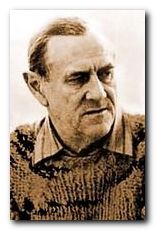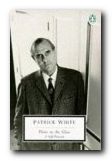free pages from our English Language software program
Oxymoron – definition
![]() Oxymoron is a figure of speech in which two incongruous or apparently contradictory words are combined to make a special effect.
Oxymoron is a figure of speech in which two incongruous or apparently contradictory words are combined to make a special effect.
![]() An oxymoron is a contracted paradox.
An oxymoron is a contracted paradox.
Examples
- He has a strong weakness for drink.
- I’ll try the sweet and sour duck.
- She is something of a cheerful pessimist
- Their affair is an open secret.
Use
![]() Oxymoron is used for emphasis or stylistic effect.
Oxymoron is used for emphasis or stylistic effect.
![]() It’s often used in advertising.
It’s often used in advertising.
![]() NB! By the way, it’s pronounced ‘ox-ymoron’ — not ‘oxy-moron’.
NB! By the way, it’s pronounced ‘ox-ymoron’ — not ‘oxy-moron’.
![]() The oxymoron is closely related to antithesis and paradox. Both of these are figures of speech.
The oxymoron is closely related to antithesis and paradox. Both of these are figures of speech.
![]() An oxymoron is ‘a contracted paradox’. That is, the paradox is an apparently contradictory statement; whereas the contradiction in an oxymoron is reduced to just two antithetical terms.
An oxymoron is ‘a contracted paradox’. That is, the paradox is an apparently contradictory statement; whereas the contradiction in an oxymoron is reduced to just two antithetical terms.
![]() It is the sort of playful and often witty effect used by those who wish to draw attention to their command of language.
It is the sort of playful and often witty effect used by those who wish to draw attention to their command of language.
![]() The device is much-loved by poets, because it enables them to express complex ideas in a very compressed form:
The device is much-loved by poets, because it enables them to express complex ideas in a very compressed form:
Where grey-beard mirth and smiling toil retired
The toiling pleasure sickens into pain[Oliver Goldsmith]
Self-assessment quiz follows >>>
© Roy Johnson 2003
English Language 3.0 program
Books on language
More on grammar


 Patrick White was born in Australia but sent to be educated in England, which he disliked intensely. He settled to live in London during the 1930s and served in the RAF during the war. After the war he returned to live in Australia, eking out his small private income by farming. His novels offer great variety in their themes, subjects, and settings – but what they have in common is his use of powerfully rich language, his deeply psychological character portraits, the dramatic incidents of his stories, and a semi-mystical belief system which he invites us to contemplate without making his narratives depend upon it. He was awarded the Nobel Prize for Literature in 1973.
Patrick White was born in Australia but sent to be educated in England, which he disliked intensely. He settled to live in London during the 1930s and served in the RAF during the war. After the war he returned to live in Australia, eking out his small private income by farming. His novels offer great variety in their themes, subjects, and settings – but what they have in common is his use of powerfully rich language, his deeply psychological character portraits, the dramatic incidents of his stories, and a semi-mystical belief system which he invites us to contemplate without making his narratives depend upon it. He was awarded the Nobel Prize for Literature in 1973.